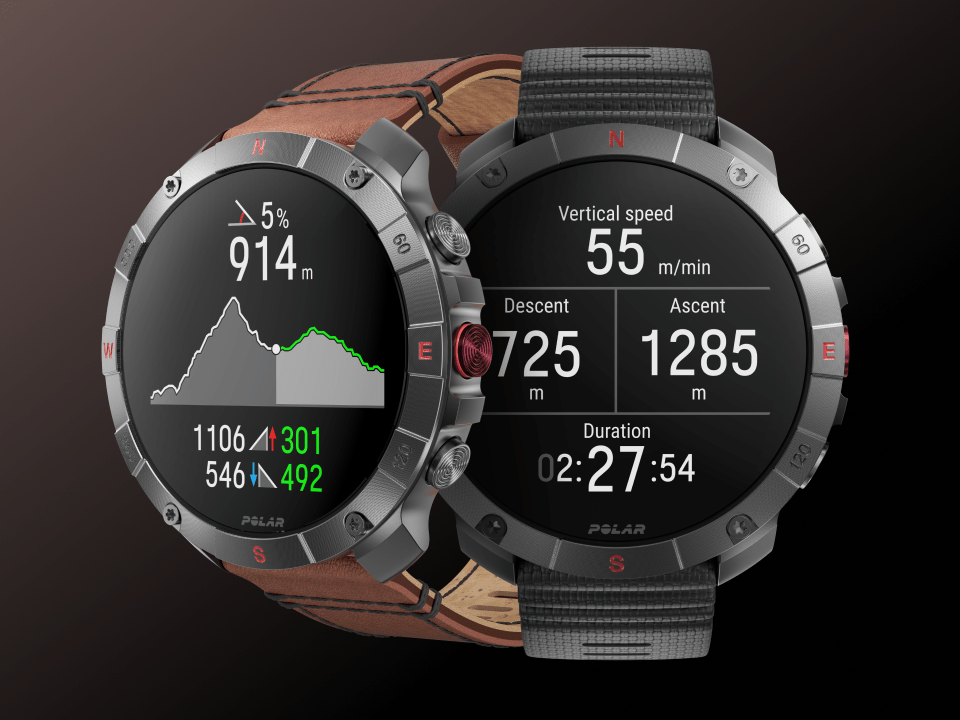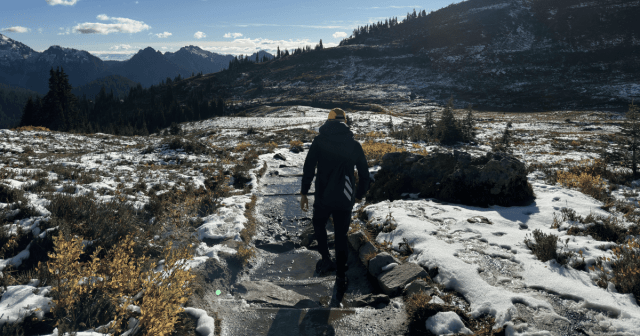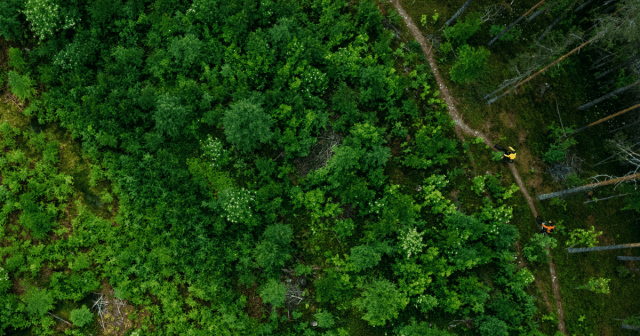Picture this: once a distant dream, the summit unfolds before you – a breathtaking panorama painted in vibrant hues. The world stretches out, a tapestry of rolling hills and verdant valleys, rewarding your unwavering determination. In that moment, you’re not just a runner; you’re an explorer, a conqueror, a part of something bigger than yourself.
Hill running on trails is a chance to rediscover the joy of movement. It is an opportunity to connect with nature in a profound way and to emerge stronger, both physically and mentally, ready to tackle any challenge life throws your way.
It’s time to leave the flat, predictable roads behind and embrace the vibrant world of uphill trail running. Here’s how every step can become an adventure, a conversation with the ever-changing terrain.
Leave the road behind
There’s a reason seasoned runners wax poetic about the transformative power of trail running. Beyond the undeniable beauty of nature, the sheer presentness demanded by the trails set this sport apart.
With its predictable rhythm and smooth surfaces, road running can lull your brain into autopilot. Your legs pump, your breaths come and go, and your mind wanders freely. Worries, anxieties, to-do lists – they all take center stage while your body goes through the motions. Here, the act of running becomes secondary to the mental chatter.
Trail running, however, is a different beast. Uneven terrain forces you to be fully engaged in every step. Your eyes scan the path ahead, deciphering the best way to navigate loose rocks, roots that threaten a trip, and sudden inclines. Each foot placement requires focus – a misplaced step can mean a painful twist or a tumble. There’s no room for mental meandering when navigating a winding, often technical trail.
This intense focus on the physical act of running becomes a form of mindfulness. You’re not just running; you’re present in the moment, completely absorbed in the task at hand. Worries and anxieties fade away, replaced by the rhythm of your breath, the feel of the earth beneath your feet, and the symphony of nature around you. It’s a mental escape unlike any other, a chance to truly disconnect and reconnect with yourself.
As you ascend a challenging grade, your body is pushed to its limits. Legs burn, lungs scream, and sweat beads on your forehead. But with each labored step, you conquer a bit of the hill, a sense of accomplishment washing over you.
And here’s where the magic truly happens: trail running and hill running go hand in hand, like peanut butter and jelly. Trails, by their very nature, weave through mountains, valleys, and uneven terrain. That translates to elevation gains, the very essence of hill running. As you ascend a challenging grade, your body is pushed to its limits. Legs burn, lungs scream, and sweat beads on your forehead. But with each labored step, you conquer a bit of the hill, a sense of accomplishment washing over you.
The combination of mental focus and physical exertion on these uphill sections becomes an incredibly rewarding experience. You’re not just running; you’rebuilding strength and resilience. You’re pushing your body, testing your limits, and emerging stronger on the other side.
So, if you’re looking for a way to escape the daily grind, to truly disconnect and find yourself, lace up your trail shoes and head for the hills. The trails won’t just provide a challenging workout; they’ll offer a profound escape for your mind and a chance to truly be present in the moment.
Embrace the challenge of the trail
Uphill trail running throws a whole new set of challenges at runners used to the smooth predictability of roads. Trails present a world of uneven terrain, demanding adjustments in stride, foot placement, and core engagement with every step.
But for many runners, this very complexity is what makes trail running so appealing. Why, you might ask, would anyone choose a surface that makes running more difficult?
One source of motivation is the physical challenge of navigating uneven surfaces and conquering inclines. Trail running strengthens a broader range of muscles than road running. The constant adjustments to maintain balance and power uphill engage the core, glutes, and hamstrings to a greater degree.
One source of motivation is the physical challenge of navigating uneven surfaces and conquering inclines. Trail running strengthens a broader range of muscles than road running. The constant adjustments to maintain balance and power uphill engage the core, glutes, and hamstrings to a greater degree.
That means maintaining a steady pace when running uphill is nearly impossible, unlike on roads. The varying grades force you to adapt your speed, often resorting to walking or hiking sections to conserve energy for the push to the summit.

There’s no shame in walking
For some runners, switching to walking is akin to admitting defeat. But ascending an uphill trail does force you to slow down and, at times, may be a more efficient means of traversing an incline. This difference alters our typical run-walk transition, meaning we often change between the two options more frequently during uphill running.
This mode switching is something that the Locomotion Laboratory at the University of Colorado, USA, has been exploring at length. Their 2020 study examined why athletes alternate between walking and running on steep inclines.
They found that because running on steep hills is less efficient and thus more exhausting, we tend to switch to walking. However, doing this uphill does fatigue your legs (especially your calves), so we change back to running.
Similarly, hill running engages different muscle groups than flat surfaces. Glutes, hamstrings, and calves work overtime to propel you upwards while your core stabilizes your body on uneven terrain. Using them in a new way can lead to a different kind of fatigue than road running.
Such differences mean that the way we understand running efficiency on flat roads is not the same for hill running on rough trails. Other factors (such as thinner air, foot placement, balance, and muscle damage from navigating the uneven terrain) contribute to a distinctive running experience.
This variation in running efficiency is something that the Laboratory of Human Movement Biology at Jean Monnet University Saint-Etienne, France, has been exploring in their research. Their 2021 study looked at how distance and incline affected the running economy of those tackle trails.
It’s a point of interest as more needs to be understood about how runners can be most efficient when approaching trails. Uphill runners appear to become less efficient as a marathon-length race progresses. But there isn’t as much change in longer races, and in very long races over 100 miles, some runners appear to become more efficient towards the end.
How to run up hills without getting (too) tired
Uphill sections on trails can be daunting, leaving even seasoned runners gasping for air. But with the right approach, you can tackle these climbs efficiently and minimize fatigue. Here are some key strategies you can try.
A heart rate monitor can be your guide to pacing uphill. While your instinct might be to push through and run the whole way, aiming for a conversationally paced effort will help you avoid burning out quickly.
Use your heart rate monitor to determine whether running or walking is more challenging on hill runs. Remember, walking uphill isn’t a concession; it’s a strategic way to conserve energy for the entire run. Find the zone where you can comfortably hold a conversation. If your heart rate spikes beyond this zone, walk or hike the steeper sections.
Get familiar with the metrics that matter

Traditional distance and pace metrics fall short on hilly trails. The latest generation of Polar watches, like Polar Vantage V3 and Polar Grit X2 Pro, give you key metrics for understanding your uphill efforts. Together, they capture the entire story of your climb, not just the forward push, giving you a clearer picture of your overall uphill performance.
Vertical Speed tracks the elevation gain, revealing the true intensity of your ascent. VAM calculates your average speed specifically for climbing sections, considering both distance and elevation gain. 3D Speed calculates your actual overall speed as you move up the incline by comparing it to your horizontal speed. Compare these metrics across different climbs to gauge your progress and identify areas for improvement, making your ascent a strategic battle, not a blind struggle.
Run with poles
Trail running poles can be game-changers for uphill climbs. They engage your upper body, distributing the workload and taking stress off your legs. A 2023 study from the University of Udine, Italy, found that using poles on uphill walking can “save the legs.” This difference can translate to increased power and efficiency on inclines.
Poles can also provide additional support, especially on loose terrain, helping you maintain balance and prevent falls. Plus, by transferring some impact from your legs to your arms, poles can help reduce stress on your knees and ankles, especially on long uphill sections.
Carrying excess weight uphill is a recipe for fatigue, so lighten your load. Analyze your gear and minimize what you bring with you. Opt for a lightweight hydration pack and ditch any non-essential items. Remember, every gram counts when you’re battling gravity.
A strong body translates to efficient uphill running. Include strength training exercises that target your legs, glutes, and core in your training routine. Exercises like squats, lunges, deadlifts, and planks will build the strength and stamina needed to power up hills easily.
If you liked this post, don’t forget to share so that others can find it, too.
Please note that the information provided in the Polar Blog articles cannot replace individual advice from health professionals. Please consult your physician before starting a new fitness program.





